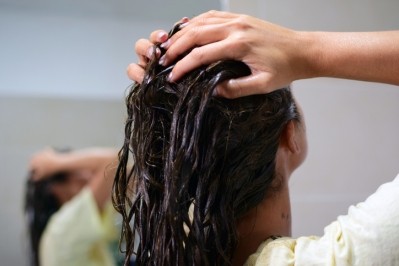SCCS seeks comment on three substances for hair care and cosmetics

As 2020 kickstarts, CosmeticsDesign-Europe catches up with what preliminary safety opinions have been published by the SCCS and a quick look back at what was finalised last year.
The SCCS is seeking comment on its preliminary opinions for the safety of three ingredients used across hair care and cosmetics: dihydroxyacetone (DHA) as a leave-on hair colouring ingredient and in self-tanning creams; aluminium as a compound in antiperspirants, toothpaste and lipstick; and zinc pyrithione (ZPT) as an anti-dandruff ingredient in rinse-off hair products.
The comment period calls on applicants and interested parties to provide clarification, if any, on the evaluation, interpretation and incorporation of the submitted set of data used in the preliminary opinion. Comment on DHA is open until January 20; aluminium until February 17; and ZPT until February 24.
DHA in hair colouring
The SCCS acknowledged that DHA (chemical name 1,3-Dihydroxy-2-propanone) was not currently regulated under the Cosmetics Regulation (EC) No. 1223/2009 but in considering scientific data, including exposure assessment and toxicological evaluation, was safe to use as a hair colouring ingredient in leave-on applications up to a maximum concentration of 6.25%.
The SCCS added that incorporation of DHA in self-tanning lotion and face creams was safe at maximum concentrations of 10%.
The preliminary opinion on DHA was adopted on 30-31 October 2019.
Aluminium in antiperspirants, cosmetics
The SCCS said new data on aluminium compounds showed concentrations of 6.25% and 10.60% in non-spray antiperspirants and spray antiperspirants, respectively, were safe. Writing in its second preliminary opinion submission, it added that use in toothpaste at 2.65% and lipstick at 0.77% was also safe.
“The SCCS considers that the systematic exposure to aluminium via daily applications of cosmetic products does not add significantly to the systemic body burden of aluminium from other sources,” it said. However, the SCCS acknowledged that its assessment had not taken into account the daily dietary intake of aluminium – a “major source” of aluminium for the population.
But, considering aluminium retention in the body, it said even if accumulation could not be ruled out after dermal exposure, “any significant accumulation in the body is unlikely following daily use of cosmetic products”.
The preliminary opinion on aluminium, issued on 30-31 October 2019, considered a safety dossier issued by Cosmetics Europe that included a clinical study on the absolute bioavailability of aluminium from dermal exposure of human volunteers to a representative antiperspirant formulation.
Zinc Pyrithione (ZPT) for anti-dandruff
The SCCS said ZPT could be considered safe to use as an anti-dandruff in rinse-off hair products up to a maximum concentration of 1%.
It acknowledged, however, that because of its listing as a CMR 1B substance by the European Chemicals Agency ECHA, it could only be used by adhering to conditions laid out in Article 15(d) of the Cosmetics Regulation (EC) No. 1223/2009.
Writing in its third submission preliminary opinion on ZPT, the SCCS said the conclusion took into account additional toxicological evaluation.
2019 SCCS final opinions
Last year, the SCCS issued final opinions on the safety of five substances relevant to cosmetics:
. Methoxypropylamino Cyclohexenylidene Ethoxyethylcyanoacetate (S87) as a UV-filter
. Butylphenyl methylpropional (p-BMHCA) as a fragrance ingredient for leave-on and rinse-off products
. Acetylated Vetiver Oil (AVO) as a fragrance ingredient for leave-on and rinse-off products
. Hydroxyethoxyphenyl Butanone (HEPB) as a preservative in rinse-off, oral care and leave-on cosmetics
. Salicylic acid (CAS 69- 72-7) as a preservative in all cosmetic products







![Chinese study highlights mental health challenges in atopic dermatitis, emphasising holistic patient care. [Getty Images]](https://www.cosmeticsdesign-europe.com/var/wrbm_gb_food_pharma/storage/images/_aliases/wrbm_tiny/publications/cosmetics/cosmeticsdesign-asia.com/headlines/formulation-science/chinese-research-linking-atopic-dermatitis-to-mental-health-underscores-need-for-holistic-care/17040623-1-eng-GB/Chinese-research-linking-atopic-dermatitis-to-mental-health-underscores-need-for-holistic-care.jpg)








